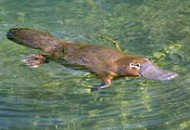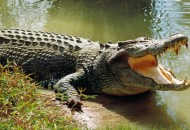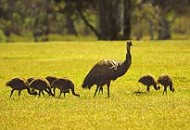Dolphin Facts
Dolphins have a body adapted for fast swimming. The head contains a round organ used for echolocation called the melon. In many species the jaws are elongated to form a distinct beak, the Bottlenose for example. Dolphins can have as many as 250 teeth. The dolphin brain is large and has a highly structured cortex, and they are widely believed to be amongst the most intelligent of all animals.
Dolphins often leap above the water surface, sometimes performing acrobatics. This and other behavior is interpreted as playing. They are capable of diving up to 260 m deep and 15 min long, but rarely stay underwater longer than few minutes. They are social animals, living in pods or schools of up to a dozen animals. The individuals communicate using a variety of clicks, whistles and other vocalizations. Membership in schools is not rigid and interchanging is common. However, the animals can establish strong bonds between each other. This leads to them staying with injured or ill members for support.
Twelve months after Bottlenose Dolphins mate, a metre long young is born in shallow water. To speed up the nursing process, the mother can eject milk from her mammary glands. The calf is nursed for 12 to 18 months and the young live closely with their mother for up to 6 years.







